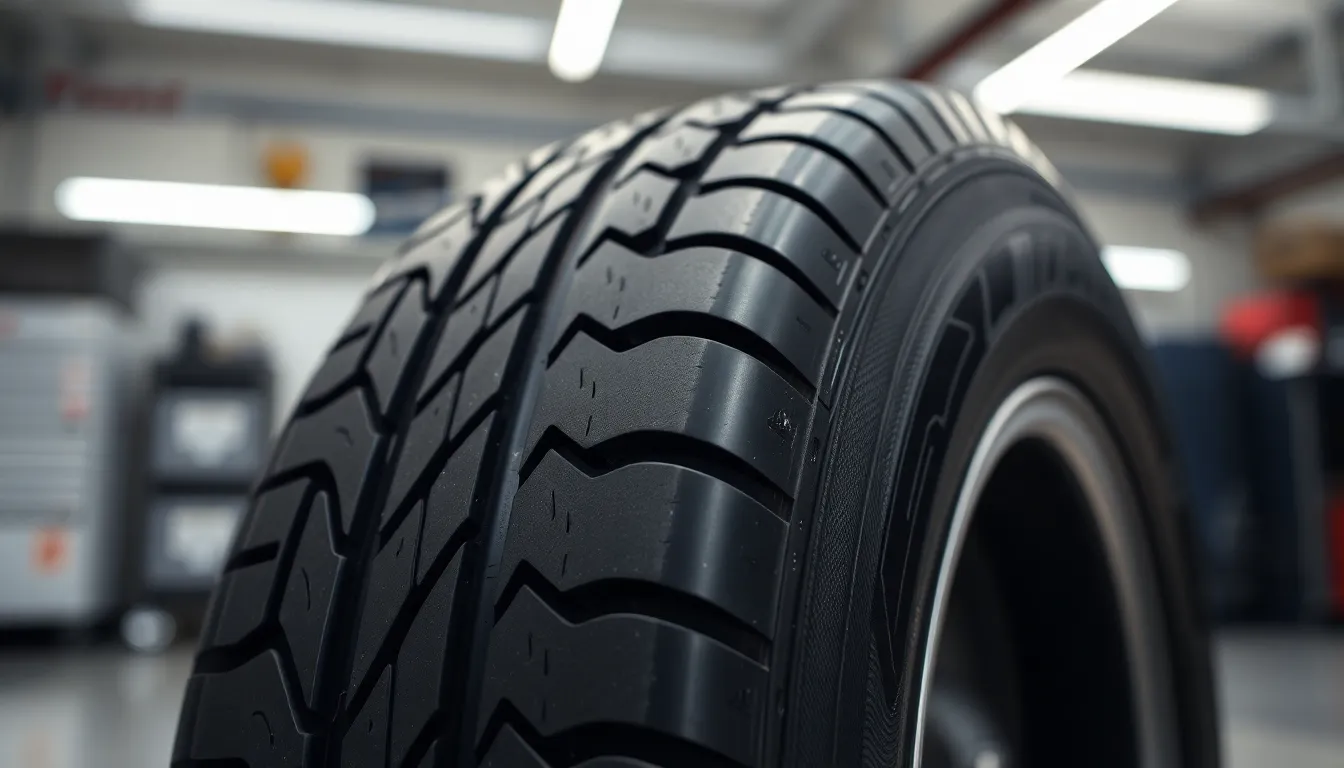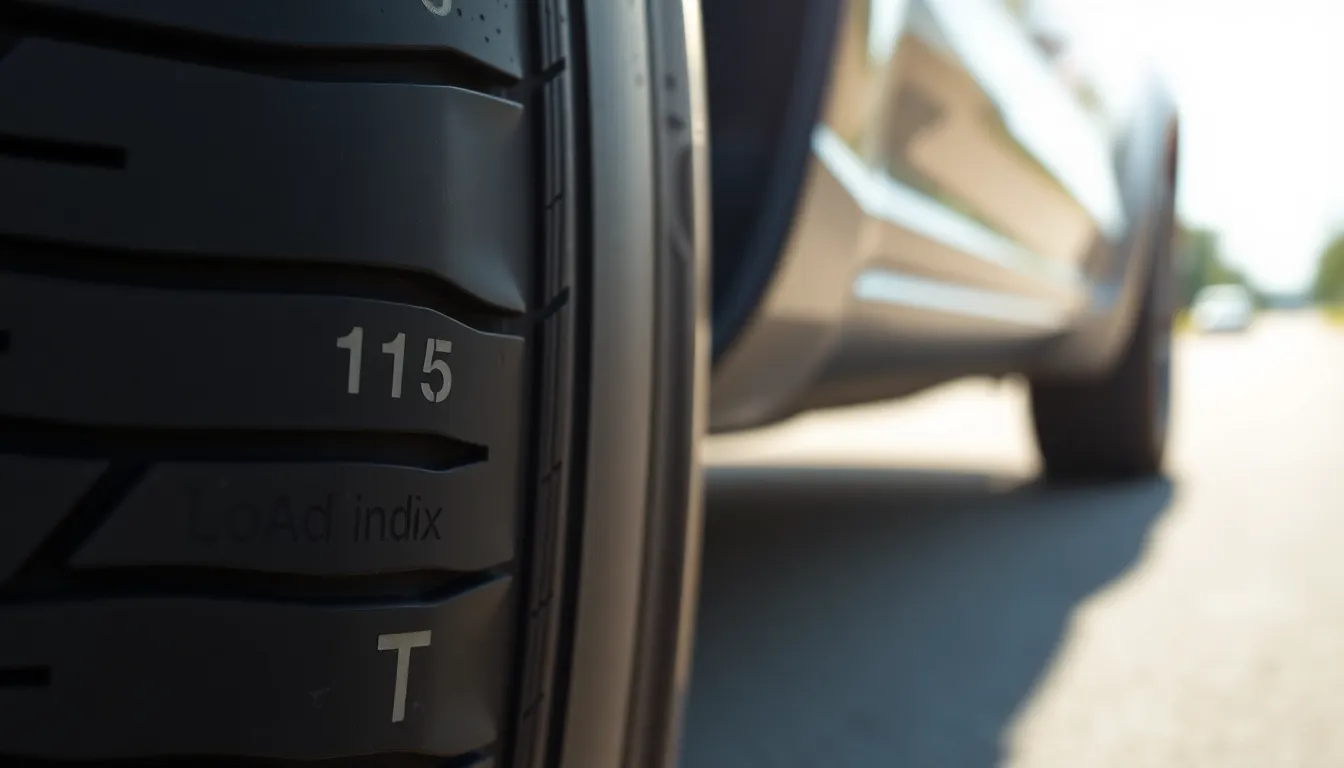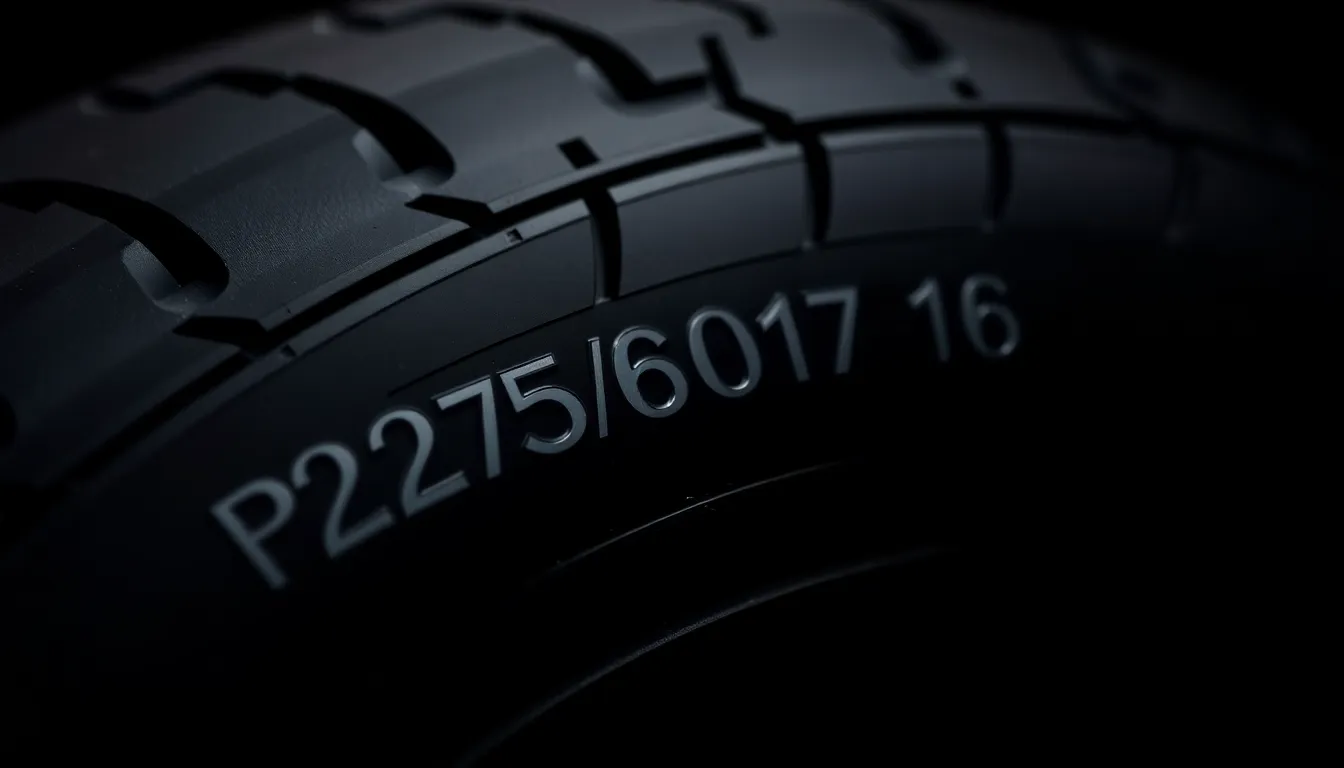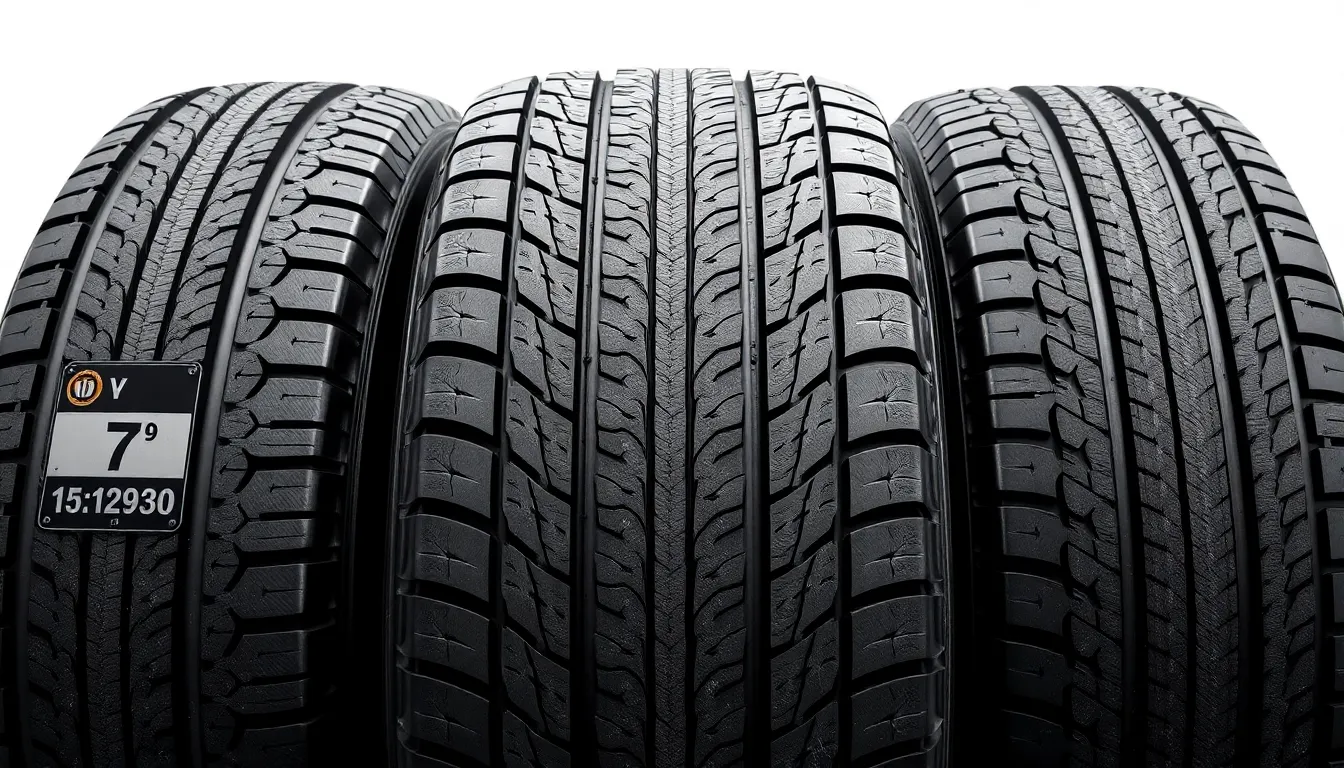Ever wondered what those mysterious numbers and letters on your tire sidewall actually mean? You’re not alone – millions of drivers encounter these cryptic codes daily without understanding their crucial safety implications.
The “115T” marking on your tires isn’t just random manufacturer jargon. It’s actually a vital piece of information that tells you exactly how much weight your tires can handle and at what speeds they’re designed to perform safely. This load index and speed rating combination directly impacts your vehicle’s performance, safety, and even your wallet.
We’ll decode this essential tire knowledge so you can make informed decisions about your vehicle’s rubber. Understanding what 115T means could prevent dangerous blowouts, improve your car’s handling, and help you choose the right replacement tires when the time comes. Let’s jump into the industry of tire specifications and unlock the secrets hidden in plain sight on your sidewalls.
What Does 115T Mean on Tires
The tire marking 115T represents two critical performance specifications that determine your vehicle’s capabilities and safety limits. Load index 115 indicates the maximum weight capacity each tire can support under optimal operating conditions. Speed rating T designates the highest sustained velocity your tires can maintain without compromising structural integrity or performance.
Breaking down the 115T code reveals exact numeric values that directly impact your driving experience. Each tire marked with load index 115 carries up to 2,679 pounds when properly inflated to manufacturer specifications. Speed rating T allows continuous operation at speeds up to 118 mph under controlled conditions with proper tire maintenance and appropriate road surfaces.
| Specification | Value | Unit |
|---|---|---|
| Load Index | 115 | 2,679 lbs per tire |
| Speed Rating | T | 118 mph maximum |
| Combined Load Capacity | 10,716 | lbs for 4 tires |
Understanding these tire specifications prevents dangerous situations that occur when vehicles exceed their tire’s designed limits. Exceeding the 2,679-pound load capacity per tire causes excessive heat buildup and potential blowouts during operation. Operating above the 118 mph speed threshold creates tire degradation that compromises handling precision and increases accident risk.
Professional tire technicians use these ratings to match replacement tires with your vehicle’s original equipment specifications. Selecting tires with lower load indices or speed ratings than factory recommendations reduces your vehicle’s performance envelope and creates safety hazards. Installing tires with higher ratings than necessary provides additional safety margins without negative consequences to vehicle operation.
Tire manufacturers engineer the 115T specification through rigorous testing protocols that simulate real industry driving conditions. Laboratory testing subjects tires to sustained loads at maximum weight capacity for extended periods to verify structural integrity. High speed testing validates the T rating by running tires at maximum rated speeds until failure points are established.
Vehicle owners can locate the 115T marking on their tire sidewall alongside other alphanumeric codes that provide additional tire information. Reading from left to right after the tire size designation reveals the load index followed immediately by the speed rating letter. Checking all four tires ensures consistent performance characteristics across your vehicle’s contact patches.
Understanding Tire Load Index Numbers

Load index numbers on tires represent the maximum weight capacity each tire can safely support. These numerical codes provide critical information for matching tires to your vehicle’s exact requirements.
The Number 115 Explained
The number 115 indicates a exact load index rating that corresponds to 1,295 pounds per tire according to standard tire load index charts. This weight capacity measurement applies when the tire maintains proper inflation pressure under normal operating conditions. Manufacturing standards establish these load index values to ensure consistent performance across different tire brands and models.
Load index 115 falls within the mid-range category for passenger vehicles and light trucks. We find this rating commonly used on sedans, SUVs, and smaller pickup trucks that require moderate load-carrying capabilities. The standardized system allows drivers to compare load capacities across different tire manufacturers using the same numerical reference point.
Load Capacity Rating System
The load index system assigns numbers ranging from 1 to 150, with each number representing a progressively higher weight capacity. Lower numbers like 1 correspond to 102 pounds, while higher ratings such as 150 can handle up to 7,385 pounds per tire.
| Load Index | Weight Capacity (lbs) | Weight Capacity (kg) |
|---|---|---|
| 1 | 102 | 46 |
| 115 | 1,295 | 586 |
| 150 | 7,385 | 3,350 |
Tire manufacturers determine these ratings through rigorous testing procedures that simulate real-industry driving conditions. Engineers subject tires to controlled loading tests at specified inflation pressures to establish maximum safe weight thresholds. The resulting load index numbers provide a universal language for tire specifications across the automotive industry.
Higher load index numbers indicate greater structural strength and reinforcement within the tire construction. These enhanced tires typically feature additional steel belts, reinforced sidewalls, and specialized rubber compounds designed to handle increased weight loads without compromising safety or performance.
Decoding the Speed Rating Letter T

The speed rating letter T indicates your tire can safely operate at maximum speeds of 118 mph (190 km/h). We find this rating commonly used on passenger vehicles and light trucks where moderate to high speed capabilities remain essential for highway driving.
Speed Rating Categories
Speed ratings follow an alphabetical system where each letter represents exact performance thresholds. Letters progress from lower speed capabilities like S (112 mph) through T (118 mph) up to high performance ratings such as Y (186 mph). Manufacturers assign these ratings based on controlled testing conditions where tires undergo sustained speed trials.
Standard passenger vehicles typically receive T ratings because they balance everyday driving requirements with highway performance. Performance oriented vehicles feature higher ratings like V (149 mph) or W (168 mph) to accommodate their enhanced capabilities. Commercial and specialty applications may require different rating categories depending on their intended use patterns.
Maximum Safe Speed Limits
| Speed Rating | Maximum Safe Speed |
|---|---|
| S | 112 mph (180 km/h) |
| T | 118 mph (190 km/h) |
| U | 124 mph (200 km/h) |
| V | 149 mph (240 km/h) |
| W | 168 mph (270 km/h) |
| Y | 186 mph (300 km/h) |
Operating within these speed thresholds ensures optimal tire performance and prevents dangerous failures. T rated tires provide adequate safety margins for most driving scenarios including highway speeds and emergency maneuvers. Exceeding the 118 mph limit compromises tire integrity and creates important safety hazards.
Temperature buildup occurs when speeds surpass rating specifications causing potential blowouts or tread separation. We recommend maintaining speeds well below maximum ratings during extended highway driving to preserve tire longevity. Environmental factors like ambient temperature and road conditions further reduce safe operating speeds from these laboratory tested maximums.
How Load Index and Speed Rating Work Together

Load index and speed rating function as complementary specifications that determine tire performance limits. These two ratings create a safety framework that governs how much weight tires can carry while maintaining exact speed capabilities.
Safety Considerations
Proper tire inflation maintains the 2,679-pound load capacity that comes with the 115 load index. Underinflated tires reduce this weight capacity significantly and increase the risk of catastrophic failure during normal driving conditions.
Operating beyond the 118 mph speed threshold creates dangerous heat buildup within the tire structure. Excessive speeds cause internal components to break down rapidly, leading to blowouts or tread separation even when loads remain within acceptable limits.
Combined stress from maximum loads and high speeds accelerates tire wear patterns. We recommend staying below both maximum ratings during extended driving periods to preserve structural integrity and prevent premature failure.
Temperature variations affect both load carrying capacity and speed performance simultaneously. Hot weather conditions reduce safe operating margins for both specifications, requiring drivers to adjust their expectations accordingly.
Performance Implications
Higher load indexes like 115 provide enhanced structural reinforcement that benefits vehicle stability. This increased strength translates to better cornering performance and reduced sidewall flex during aggressive maneuvers.
Speed rating T delivers consistent performance characteristics up to 118 mph without compromising handling precision. The tire construction maintains its designed contact patch and steering response throughout this speed range.
Load capacity directly impacts braking performance since heavier vehicles require more stopping distance. Tires operating near their 2,679-pound limit experience increased braking temperatures and extended stopping distances.
Fuel efficiency correlates with both load index and speed rating specifications. Tires designed for higher loads typically feature stiffer construction that can improve rolling resistance when operating below maximum capacity.
Ride quality varies based on the structural requirements needed to achieve exact load and speed ratings. The reinforced construction necessary for 115T specifications may produce a firmer ride compared to lower-rated alternatives.
Finding 115T Ratings on Your Tires

Locating the 115T marking on your tires requires examining exact areas of the tire sidewall where manufacturers display standardized information. We can identify these ratings by understanding the systematic placement of tire specifications and the visual layout of sidewall markings.
Tire Sidewall Information
Tire sidewalls contain comprehensive specifications displayed in a standardized sequence that includes size dimensions followed by load index and speed rating information. The 115T marking appears as part of a larger alphanumeric code that typically reads something like “P225/60R16 115T” where the final numbers and letter represent our target specifications.
Manufacturers position these markings using raised lettering or molded impressions that remain visible throughout the tire’s service life. The sidewall displays multiple sets of information including DOT codes, maximum pressure ratings, and construction details, but the load index and speed rating consistently appear together in the tire size designation.
Black sidewalls show white or light-colored markings for maximum visibility, while some performance tires feature colored sidewall accents that highlight exact rating information. The 115T designation maintains the same font size and style as the preceding tire dimensions, creating a continuous information string.
Where to Look for Ratings
The load index 115 and speed rating T appear immediately after the rim diameter measurement in the tire size sequence, positioned as the final elements of the primary size designation. We find this information on both sidewalls of each tire, though one side typically displays more prominent markings than the other.
Look for the ratings approximately one-third of the way down from the tire’s maximum width, positioned between the brand name area and the bead where the tire meets the rim. Most manufacturers place the complete tire size information in this location, making the 115T markings easily accessible during visual inspections.
The ratings appear in a horizontal line reading from the tire’s outer edge toward the vehicle, following standard industry formatting that places the load index number directly before the speed rating letter without spaces or punctuation. Tire sidewalls may display the same information multiple times, but the primary designation near the size markings provides the authoritative specification.
| Location | Position | Format Example |
|---|---|---|
| Primary sidewall | Between brand and bead | P225/60R16 115T |
| Secondary sidewall | Same relative position | 225/60R16 115T |
| Tire size sequence | Final two elements | 115T |
When You Need 115T Rated Tires

We recommend 115T rated tires for vehicles requiring exact load capacity and speed capability combinations. These tires serve vehicles designed to operate within the T speed rating limits while requiring the substantial load capacity that a 115 load index provides.
Vehicle Types and Applications
Standard passenger vehicles benefit most from 115T tire specifications, particularly mid-size sedans and full-size family cars that carry multiple passengers and cargo regularly. Crossover SUVs frequently use these tires because they balance passenger comfort with moderate hauling requirements.
Light pickup trucks often require 115T ratings when manufacturers design them for mixed-use applications rather than heavy-duty commercial work. Minivans commonly feature these specifications since they transport families and cargo loads that approach the 1,295-pound capacity per tire.
Station wagons and hatchbacks with larger cargo areas use 115T ratings to accommodate weekend trips and family vacations. Compact SUVs that prioritize fuel efficiency over extreme off-road capability frequently specify these tire ratings.
Replacement Considerations
Match the original specifications exactly when replacing 115T tires to maintain vehicle safety and performance standards. Check your owner’s manual for the manufacturer’s recommended tire specifications before purchasing replacements.
Verify load requirements by calculating your typical cargo weight plus passenger weight to ensure the 115 load index meets your actual usage patterns. Consider your driving habits since the T speed rating limits sustained speeds to 118 mph under optimal conditions.
Replace all four tires simultaneously when possible to maintain consistent performance characteristics across your vehicle’s contact patches. Consult tire professionals who can confirm that 115T specifications align with your vehicle’s suspension and braking systems.
Avoid mixing different load indexes or speed ratings on the same vehicle as this creates handling imbalances and potential safety hazards. Document your tire specifications for future reference and maintain records of installation dates and mileage.
Comparing 115T to Other Common Ratings

115T tires occupy a middle ground in the tire performance spectrum when compared to other popular ratings. Load index 115 maintains consistent weight capacity across different speed ratings, supporting 1,289 pounds per tire regardless of whether you choose T, H, or V speed ratings.
Speed rating differences create the primary distinction between these comparable options. T-rated tires handle speeds up to 118 mph, while H-rated versions accommodate speeds reaching 130 mph. V-rated alternatives extend performance capabilities to 149 mph maximum speeds.
| Load Index | Load Capacity (lbs) | Speed Rating | Max Speed (mph) |
|---|---|---|---|
| 115 | 1,289 | T | 118 |
| 115 | 1,289 | H | 130 |
| 115 | 1,289 | V | 149 |
Performance characteristics vary significantly between these rating combinations. 115T tires provide adequate speed capability for standard highway driving and daily commuting scenarios. 115H options deliver enhanced high-speed stability for drivers who frequently travel on highways with higher speed limits. 115V configurations offer superior performance for enthusiastic drivers who demand maximum speed capability while maintaining the same load carrying capacity.
Cost differences typically reflect the performance gap between these ratings. T-rated tires generally cost less than H or V alternatives due to their standard construction requirements. H-rated options command moderate premium pricing for improved speed capability. V-rated versions represent the highest price point within this load index category.
Construction differences explain the performance and cost variations. T-rated tires use standard belt configurations and rubber compounds optimized for everyday driving conditions. H-rated alternatives incorporate reinforced sidewalls and enhanced belt systems for improved high-speed durability. V-rated models feature advanced compound formulations and specialized construction techniques designed for sustained high-speed operation.
Common vehicle applications help determine appropriate rating selection. 115T fits standard passenger cars, family sedans, and light trucks used primarily for commuting and regional travel. 115H matches sport sedans, performance-oriented SUVs, and vehicles designed for occasional high-speed highway travel. 115V suits sports cars, high-performance vehicles, and applications where maximum speed capability remains essential while maintaining substantial load capacity.
Conclusion
Understanding tire markings like 115T empowers us to make safer and smarter decisions about our vehicles. These specifications aren’t just random numbers—they’re engineered safety standards that protect us on the road.
When we know our tire’s load capacity of 1,289 pounds and speed rating of 118 mph we can drive with confidence within these limits. This knowledge becomes invaluable during tire shopping and helps us avoid costly mistakes that could compromise our safety.
We recommend keeping a record of your tire specifications and consulting professionals when replacing tires. By respecting these engineered limits and choosing appropriate ratings for our driving needs we ensure optimal performance and safety for years to come.
Frequently Asked Questions
What does 115T mean on a tire?
The 115T marking on a tire indicates two crucial specifications: the load index (115) and speed rating (T). The number 115 means each tire can safely support up to 1,295 pounds, while the letter T indicates the tire can handle sustained speeds up to 118 mph under optimal conditions.
How do I find the 115T marking on my tire?
The 115T designation appears on the tire sidewall as part of a larger alphanumeric code, typically formatted like “P225/60R16 115T.” Look for this marking on either sidewall of your tire, positioned after the rim diameter measurement. The load index and speed rating are always placed together for easy identification.
What vehicles commonly use 115T rated tires?
115T rated tires are commonly found on mid-size sedans, full-size family cars, crossover SUVs, light pickup trucks, minivans, station wagons, and compact SUVs. These tires are ideal for standard passenger vehicles that require moderate load capacity and highway-appropriate speed capabilities for everyday driving conditions.
Can I replace 115T tires with different ratings?
It’s recommended to match your vehicle’s original tire specifications when replacing 115T tires. Mixing different load indexes or speed ratings can create handling imbalances and safety hazards. Always consult your vehicle manual or a professional tire technician to ensure proper compatibility and maintain consistent performance.
What happens if I exceed the 115T speed or weight limits?
Exceeding the 118 mph speed limit or 1,295-pound weight capacity can compromise tire integrity and create dangerous situations. Operating beyond these limits may lead to tire failure, blowouts, or compromised vehicle handling. Always stay within manufacturer specifications to ensure optimal safety and tire longevity.
How does 115T compare to other tire ratings like 115H or 115V?
All 115-rated tires support the same 1,295-pound load capacity, but speed ratings differ significantly. 115T handles speeds up to 118 mph, 115H extends to 130 mph, and 115V reaches 149 mph. Higher speed ratings typically offer enhanced high-speed stability but may come at increased cost.

